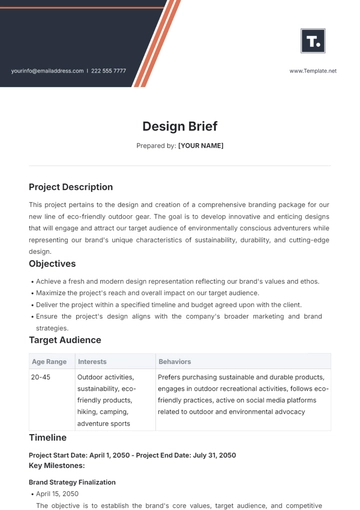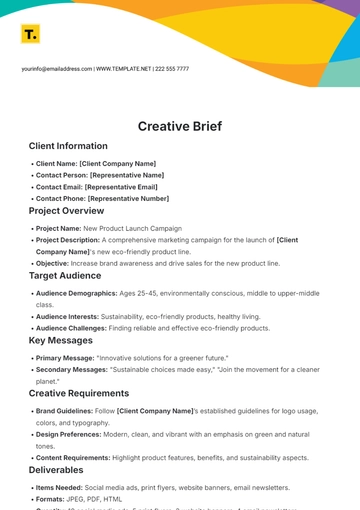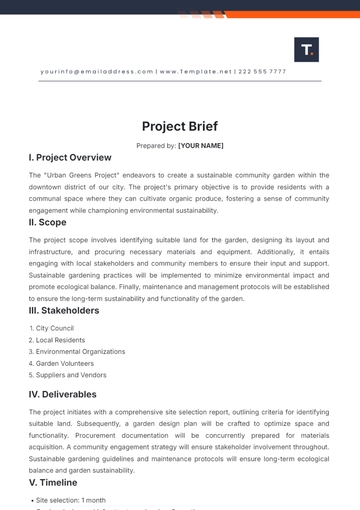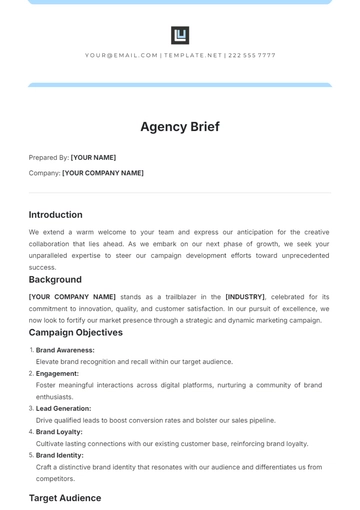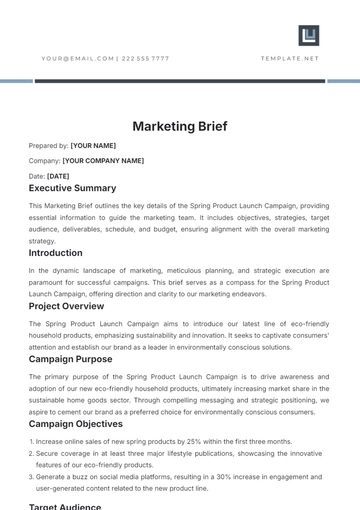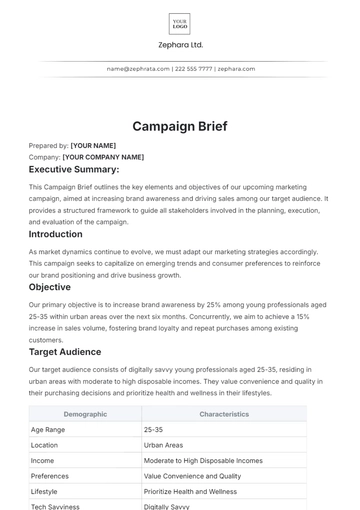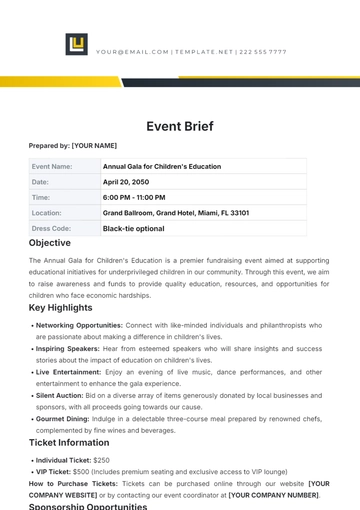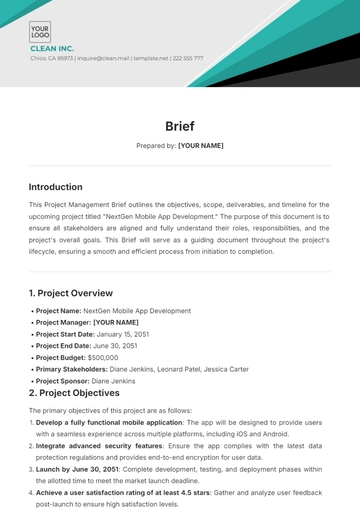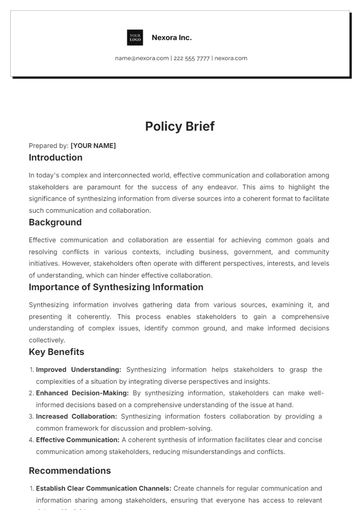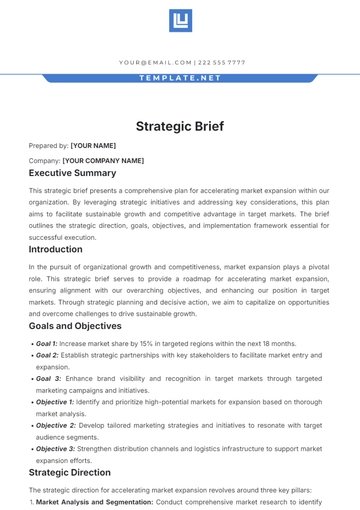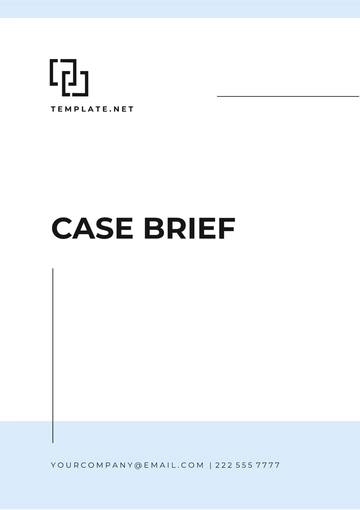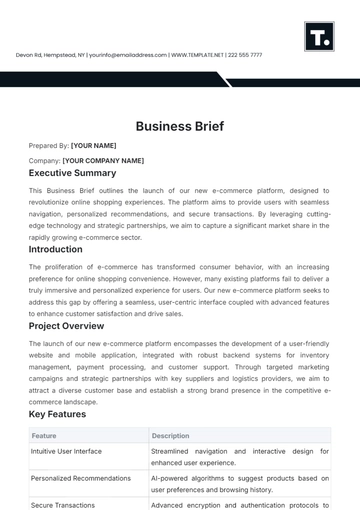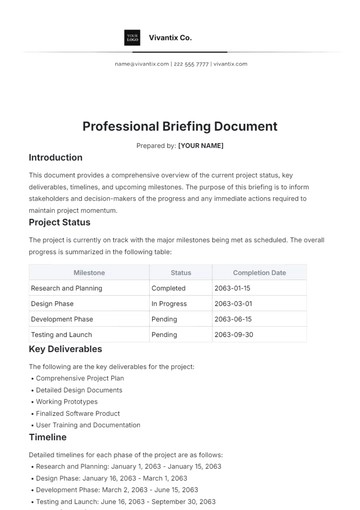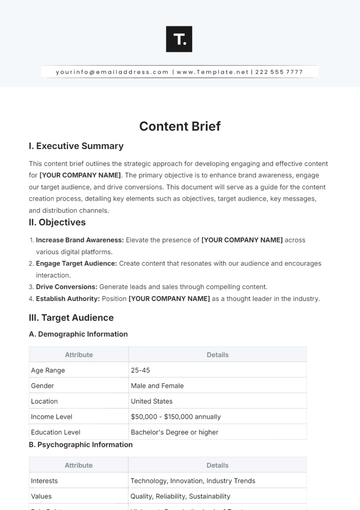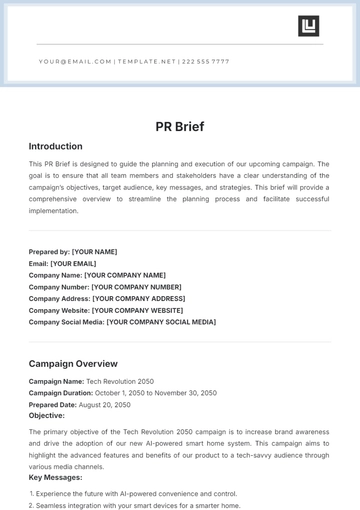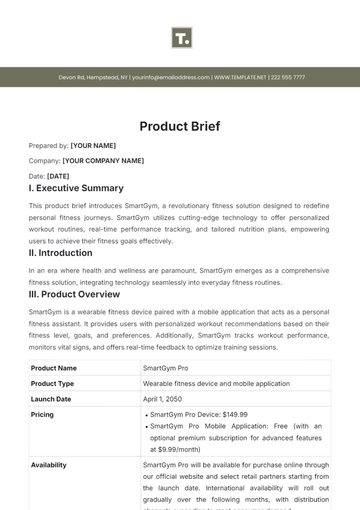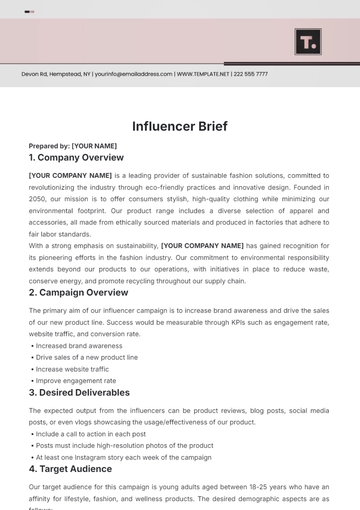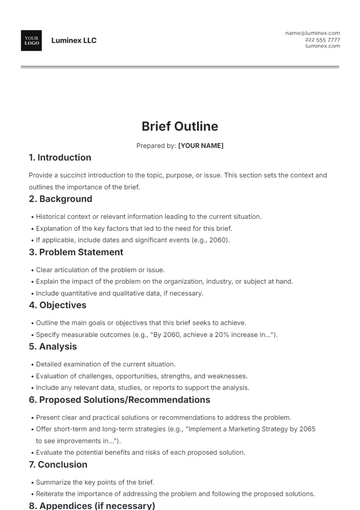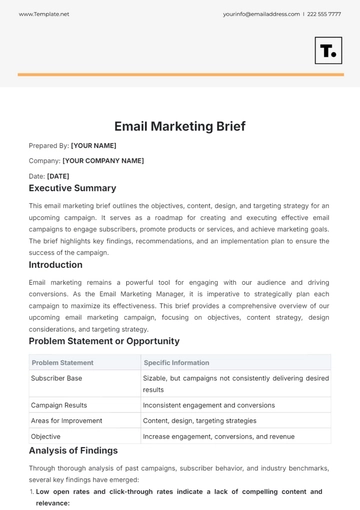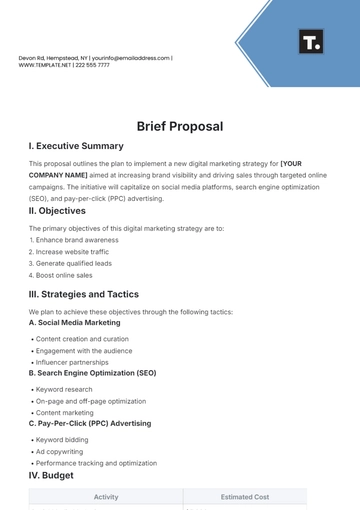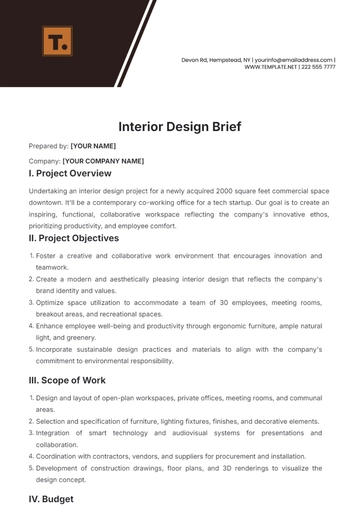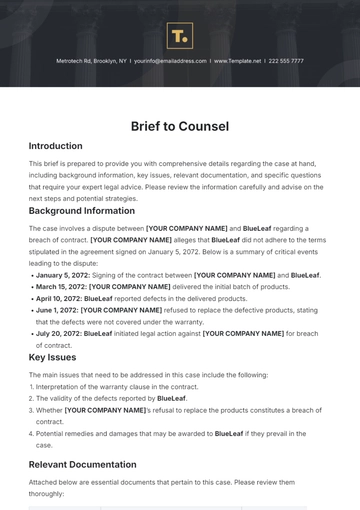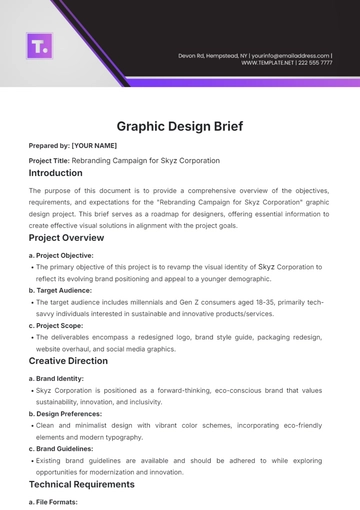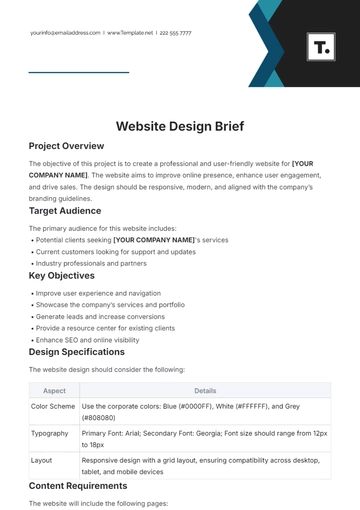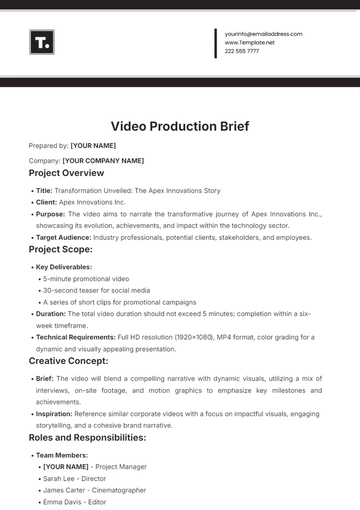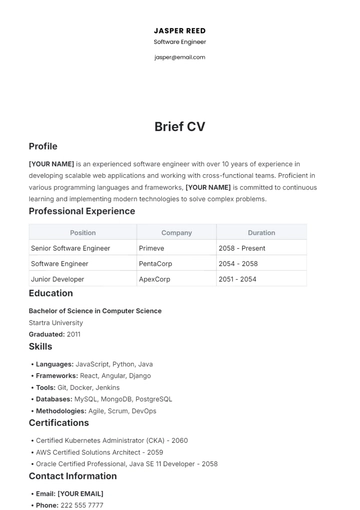Free Business Brief
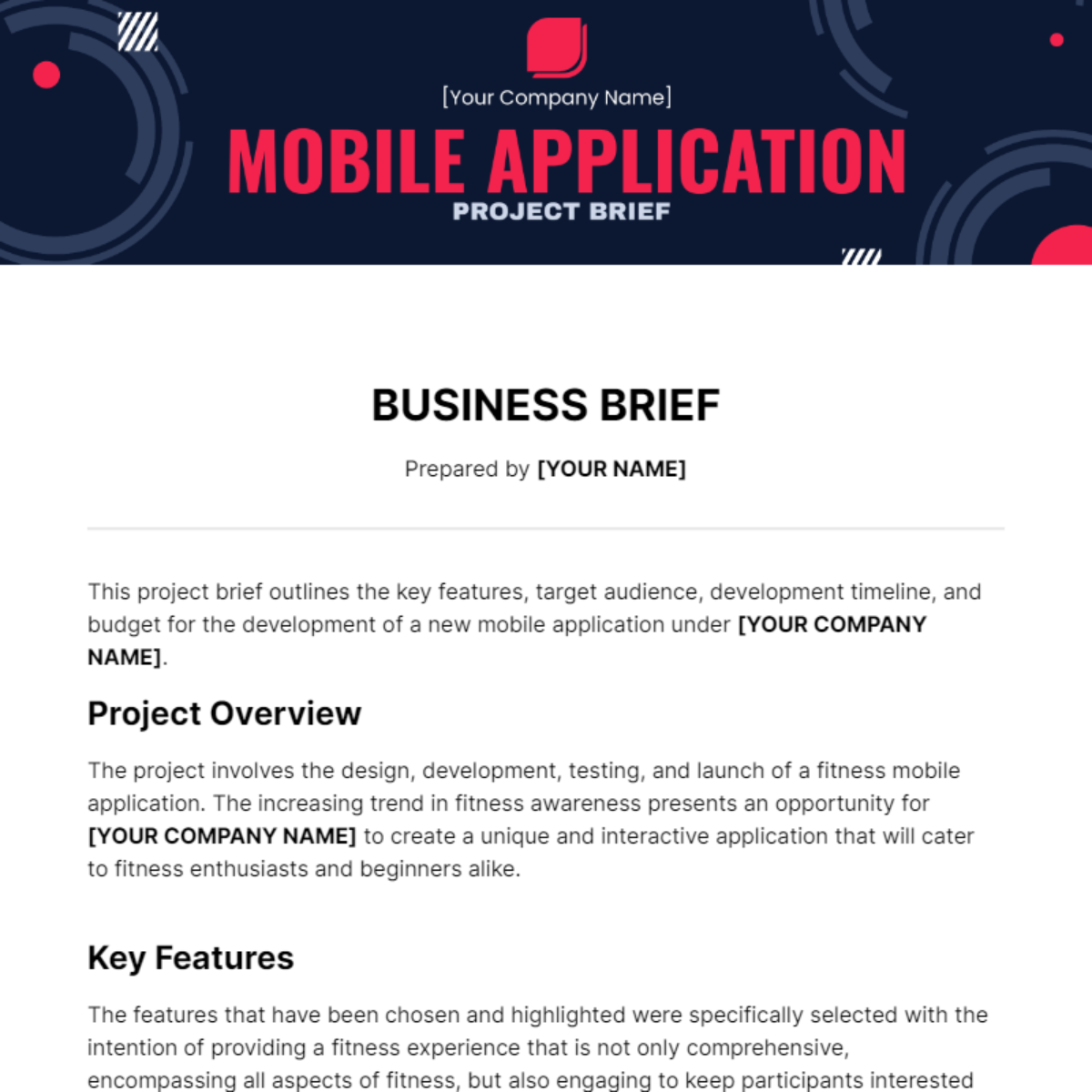
Prepared by [YOUR NAME]
This project brief outlines the key features, target audience, development timeline, and budget for the development of a new mobile application under [YOUR COMPANY NAME].
Project Overview
The project involves the design, development, testing, and launch of a fitness mobile application. The increasing trend in fitness awareness presents an opportunity for [YOUR COMPANY NAME] to create a unique and interactive application that will cater to fitness enthusiasts and beginners alike.
Key Features
The features that have been chosen and highlighted were specifically selected with the intention of providing a fitness experience that is not only comprehensive, encompassing all aspects of fitness, but also engaging to keep participants interested and motivated on their fitness journey.
Feature | Description |
|---|---|
User Profile Creation | Customize profiles to track fitness journey. |
Fitness Tracker | Analyze workouts, calories, and steps. |
Workout Planner | Provide customizable plans based on fitness levels. |
Diet Guide | Offer personalized diet plans and nutrition tracking. |
Community Feature | Enable user interaction and community-building. |
Target Audience
Primary audience includes individuals seeking to develop or maintain fitness regimens, fitness enthusiasts, and those requiring assistance in creating balanced diet plans.
Development Timeline
The development timeline is structured into distinct phases to ensure a systematic and efficient development process:
Phase | Timeline | Details |
|---|---|---|
Planning & Design | Month 1 - 2 | Detailed planning and design of the application's interface and functionality. |
Development | Month 3 - 5 | Active building and coding of the fitness app based on the finalized design. |
Testing | Month 6 | Rigorous testing to identify and rectify any issues or bugs. |
Launch | Month 7 | Introduction of the fitness app to the market for public use. |
Budget
The budget allocation covers essential aspects of the project, including planning, development & design, testing, and the launch of the application.
Category | Estimated Amount |
|---|---|
Planning & Design | [AMOUNT] |
Development | [AMOUNT] |
Testing | [AMOUNT] |
Launch | [AMOUNT] |
Total | [INSERT BUDGET AMOUNT] |
Project Risks and Mitigation Strategies
Identifying potential risks and implementing strategies to mitigate them are crucial for project success:
Technical Setbacks
Strategy: Rigorous testing methods will be employed throughout the development process to identify and address technical issues early on.
Delays in Project Timeline
Strategy: Adopting a flexible project management approach to accommodate unforeseen challenges and changes in requirements.
Changes in Market Trends
Strategy: Constant market analysis will be conducted to adapt the application features to align with evolving fitness trends.
User Adoption Challenges
Strategy: Implementing user-friendly interfaces, conducting beta testing, and gathering user feedback to enhance the application's usability.
Data Security Concerns
Strategy: Employing robust security measures, encryption protocols, and compliance with data protection standards to ensure user data security.
Stakeholder Engagement
Ensuring effective communication and collaboration with stakeholders is vital for project success:
Regular Updates:
Regularly update stakeholders on project milestones, challenges, and achievements to maintain transparency and keep everyone informed.
Feedback Mechanism:
Establish a feedback mechanism for stakeholders to share insights, suggestions, and concerns, fostering a collaborative approach to project development.
Interactive Workshops:
Conduct interactive workshops or meetings to gather specific feedback and insights from stakeholders, ensuring their perspectives are considered in the decision-making process.
Documentation and Reports:
Provide comprehensive documentation and regular reports outlining project progress, allowing stakeholders to track developments and make informed contributions.
User Testing Sessions:
Include stakeholders in user testing sessions to gather real-time feedback and insights into user experience, addressing concerns and optimizing features based on practical observations.
By implementing these stakeholder engagement strategies, we aim to create an inclusive and collaborative environment, ensuring all relevant perspectives contribute to the successful development and launch of the fitness mobile application.
- 100% Customizable, free editor
- Access 1 Million+ Templates, photo’s & graphics
- Download or share as a template
- Click and replace photos, graphics, text, backgrounds
- Resize, crop, AI write & more
- Access advanced editor
